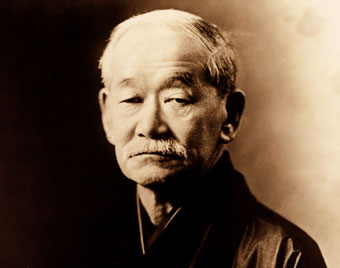Judo is derived from Jujutsu. It was created by Professor Jigoro Kano who was born in Japan on October 28, 1860 and passed away on May 4, 1938 after a lifetime of promoting Judo.
Mastering several styles of jujutsu including Kito-Ryu and Tenjin-Shinyo Ryu in his youth he began to develop his own system based on modern sports principles. In 1882 he founded the Kodokan Judo Institute in Tokyo where he began teaching his system. Now, this Institute is the international authority for Judo.
The name Judo was chosen because it means the “gentle or yielding way”. Kano emphasized the larger educational value of training in attack and defense so that it could be a path or way of life that all people could participate in and benefit from. He eliminated some of the traditional jujutsu techniques and changed training methods so that most of the moves could be done with full force to create a decisive victory without injury.
The popularity of Judo increased dramatically after a famous contest hosted by the Tokyo police in 1886 where the Judo team defeated the most well-known jujutsu school of the time. After it, Judo became a part of the Japanese physical education system and began its spread all around the world.
Dr. Kano, President of the University of Education, Tokyo, dedicated his life to studying the ancient martial art of Jujutsu and integrating what he considered to be the best of their techniques into what is now known as the modern sport of Judo. Judo means many things to different people.
It is a fun sport, an art, a discipline, a recreational or social activity, a fitness program, techniques of self-defense or combat, and a way of life. Judo is all of these and much more. It became the Olympic Sports in 1964 and is practiced by millions of people throughout the world today.
People practice Judo to excel in competition, to stay in shape, to develop self-confidence, and for many other reasons. But most of all, people do Judo just for the fun of it.
